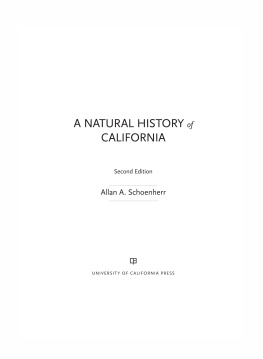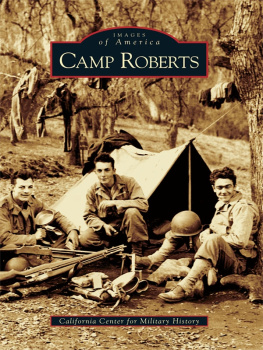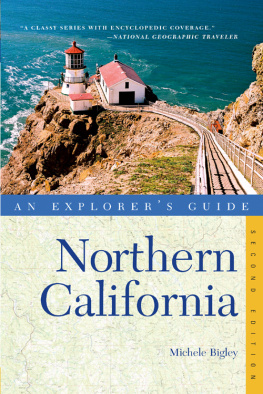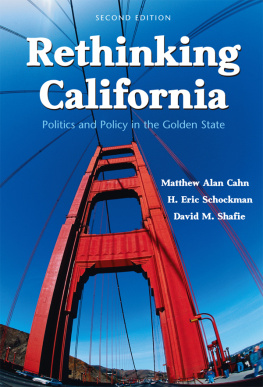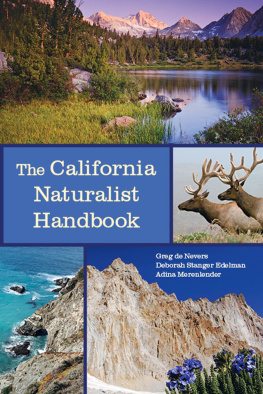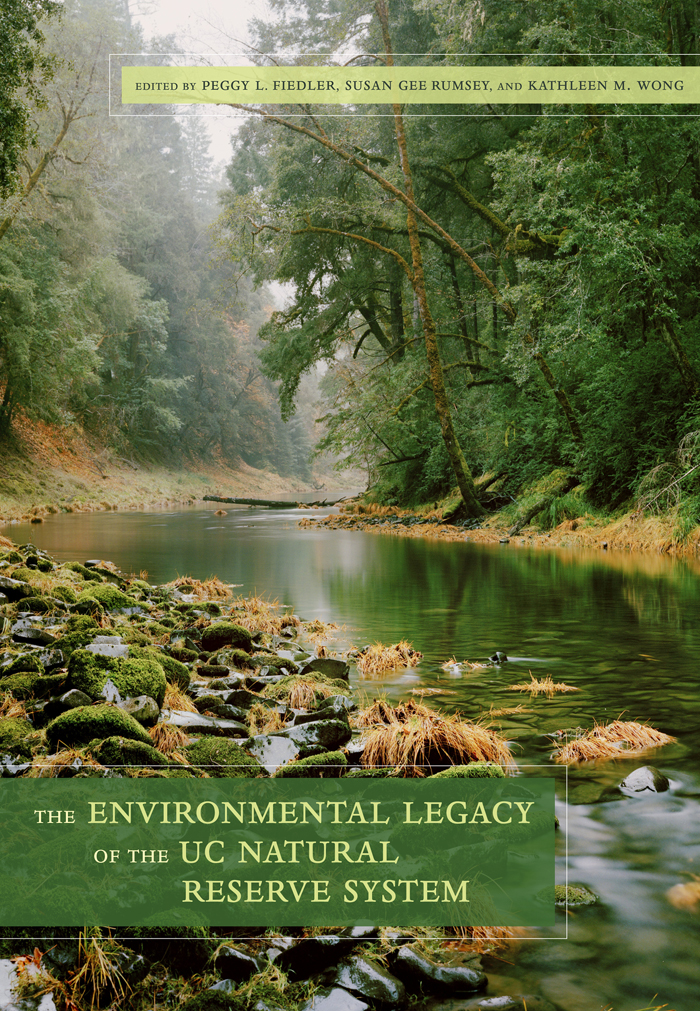ACKNOWLEDGMENTS
We wish to thank the managers of the NRS reserves who provided the raw material for each reserve description and gave generously of their time to help us ensure accuracy, interest, and quality. These kind managers include Paul Aigner, James M. Andr, Andrew J. Brooks, Virginia (Shorty) Boucher, William Bretz, Jeff Brown, Don Canestro, Steve Davenport, Daniel Dawson, Faerthen Felix, Carol Felixson, Becca Fenwick, Ken Halama, Michael P. Hamilton, Isabelle Kay, Catherine E. Koehler, Tasha La Doux, Lyndal Laughrin, Allan Muth, Suzanne Olyarnik, Mark Readdie, Cristina Sandoval, Peter Steel, and Mark Stromberg. Special thanks go to reserve managers Kate McCurdy, author of the Sedgwick Reserve chapter, and Peter Bowler, author of the San Joaquin Marsh chapter.
Equally generous were the visual artists, scientists, and nonprofit organizations who provided artwork and photographs as well as the generous permission to reproduce their work. They include Adventure Risk Challenge; Debbie Aldridge, courtesy of UC Davis; Ansel Adams, courtesy of the UC Riverside Museum of Photography; Daniel Anderson; Lisa Anderson; James M. Andr; Mike Baird; Michael Benard; Jerry Booth; Peter Bowler; Chris Brown; Marie-Thrse Brown; Kevin Browne; Don Canestro; Mark A. Chappell; Norden H. (Dan) Cheatham; Ammon Corl; Daniel P. Costa; Don Croll; Lyndsay Dawkins; Donna Dewhurst; Nick DiCroce; the Estate of Richard Diebenkorn in cooperation with the Santa Cruz Island Foundation, particularly Peggy Dahl and Marla Daily; Gage Dayton; Tara de Silva; Max Eissler; Deborah Elliott-Fisk; Baotran Ellner; Jeff Falyn; Becca Fenwick; Wayne R. Ferren Jr.; Mark Fisher; Steven M. Freers; Dennis Galloway, courtesy of UC Berkeley; Jan Goerrissen; Joyce Gross; David J. Gubernick; Jennifer Gurecki; Michael P. Hamilton; Holli Harmon; Tree and J. Hensdill; Ann Howald; Stephen Ingram; Isabelle Kay; Kim Kratz; Tom Killion; Catherine E. Koehler; Kim Kratz; Jonathan Lamb; Kevin Lafferty; Lyndal Laughrin; Minette Layne; David Lee; Daniel Liberti; Steve Lonhart; Bruce Lyon; Dave Menke; Sean McStay; Peter Morning, courtesy of Mammoth Mountain; Pat Morris; Museum of Vertebrate Zoology, UC Berkeley; Violet Nakayama; the Norris Family; Vide Ohlin; Robert W. Patterson; Jessica Peak; Bruce Perry; Hank Pitcher; John T. Rotenberry; Galen Rowell, courtesy of Barbara Laughon of Mountain Light Photography; Cristina Sandoval; Leslie Saul-Gershenz; Jacqueline Sones; Will James Sooter; Michael Sulis; Stephen Ting; Tim Torell, courtesy of the Nevada Department of Wildlife; the University and Jepson Herbaria, UC Berkeley; the US Fish and Wildlife Service; the US Postal Service; John W. Wall; Larry Wan; Lobsang Wangdu; Catherine M. Watters; Jeffery T. Wilcox; and Alan and Elaine Wilson. In particular, we wish to thank Christopher Woodcock, an exceptionally gifted photographer, who so freely gave his magnificent photographs of each reserve to grace these pages.
Additional contributors to the text include NRS systemwide staff, faculty, and NRS campus coordinators whose earlier writings and analyses we drew upon, sometimes heavily. We thank Peter Alagona, Jerry Booth, Elaine Miller Bond, Peter Bowler, Jeffrey Clary, Peter G. Connors, Daniel P. Costa, Don Croll, Gage Dayton, Michael Dorward, Carol Felixson, Ava Ferguson, Wayne R. Ferren Jr., Alexander N. Glazer, Sarah Steinberg Gustafson, Margaret L. Herring, Elizabeth Howard, Pam Huntley, Violet Nakayama, Chen Yin Noah, Frank Powell, Liza Riddle, Philip W. Rundel, J. Roger Samuelsen, Jacqueline Sones, John Smiley, Sue Swarbrick, Tim Stephens, and Jeffery T. Wilcox. We remain grateful to all for allowing us to repackage their words and for their patience with us as we continued to ask favor after favor.
People who have provided inspiration and unflagging encouragement include not only the founders of the NRS but also Peter Bowler, Ann Bromfield, Beth Burnside, Norden H. (Dan) Cheatham, Philippe Cohen, Daniel P. Costa, Paul K. Dayton, Trish Holden, Claudia Luke, John Rotenberry, and H. Bradley Shaffer. In addition, we would like to recognize the great kindness of Phyllis Faber, who helped to bring the idea of this book to the attention of the University of California Press. Chuck Crumly, Kate Hoffman, and Lynn Meinhardt, also of the University of California Press, worked hard to conjure this unusual compendium of text and images, and each deserves heartfelt thanks for shepherding this book into publication.
INSPIRATION AND VISION

ORIGINS OF THE UC NATURAL RESERVE SYSTEM
Kenneth S. Norris
In 1948, Ken Norris was a graduate student in the laboratory of zoologist Ray Cowles at the Los Angeles campus of the University of California. For his dissertation, he decided to study the heat-tolerant desert iguana ( Dipsosaurus dorsalis ) of the Coachella Valley. Norris spent weeks in the dunes at the edge of Palm Springs observing these reptiles in their natural habitat. The experience sparked a lifelong quest to secure wildlands for teaching and research. The following are excerpts from his last book, Mountain Time (2010), published posthumously.
...
At one point in the spring, I had noticed half a dozen lath stakes pounded into the shoulder of the road down by the green-banded telephone pole, with unintelligible black writing scrawled on them. I hope whoever it is doesnt clean away all the Dicoria bushes that the iguanas love so much, I thought, assuming that a road crew was at work. But the coming events were to be much worse than that!
On my next trip to the Coachella Desert, I was appalled to encounter a wide swath of planed-down desertover half of my study area was vacant sand. Bulldozers had lumbered north off the road and flattened a long tract of hummock dunes. Creosote bushes lay in ragged, forlorn heaps on the bare sand. A large motor hotel soon sprang up on the cleared place. The Coachella Valley had begun its precipitous plunge into a world of golf courses, housing tracts, and condos. And it has not stopped yet.
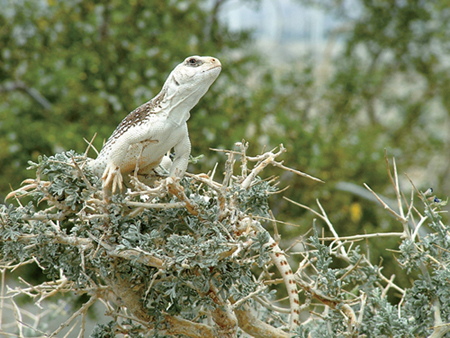
Land developers ended Ken Norriss research project on desert iguanas when they bulldozed the iguanas habitat to build a motel. The experience spurred Norris to organize what is now the UC Natural Reserve System. (Mark Fisher)
When the bulldozers planed down that strip of dunes, my graduate research program was stopped cold. I was just beginning to know all the players out there in the dunes, their life patterns, their associates. It was no use continuing on that piece of desert. Soon traffic, pavement, visiting children, pets, and all the rest would rip apart the society of animals I had chosen to observe. How far into the dunes the effects would go was anybodys guess. I was dismayed, cast adrift.
The catastrophe of the desert iguana study plot shook loose in me a clear and somber vision of the future of wildland America. No question about it, the rapidly urbanizing United States would soon be a place where the natural land and its life would be embattled nearly everywhere.
As a graduate student, I listened many times to Doc Cowless somber assessment of the future, especially about the disappearance of natural environments. He had watched, with obvious pain, as the wild places that supported his teaching and research disappeared. Several times, he had tried to convince the University to accept large tracts of wildland offered to him for these purposes; officialdom had always refused.




